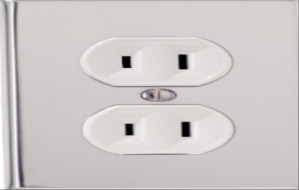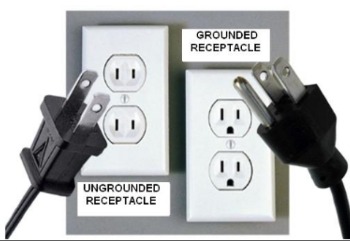
If you are living in an older home built before 1960, or still have some 2 prong ungrounded outlets in your house, it’s time you upgrade to meet the code requirements.
Non-grounded outlets can pose serious risks in homes ranging from electrical shocks, to fire hazards and damage to electrical appliances.
That is why it is important to identify and ground the non-grounded outlets to ensure the safety of residents or users of the electrical system.
Read on to find out what an ungrounded outlet is, its dangers and how to maintain electrical safety.
What is an ungrounded outlet
An ungrounded outlet is an electrical outlet without a ground wire. Grounding wires are safety cables that help to send faulty currents to the ground, preventing electric shock and fire hazards.
Ungrounded outlets are common in older homes built before grounding outlets became the standard. You can identify them by their two-prong design, instead of the three-prong design of grounded outlets.
If you still have these ungrounded two-prong outlets in your home, it’s time you upgrade to meet the national electrical code standard.
Why are ungrounded outlets dangerous?
Ungrounded outlets are dangerous because they lack the safe path in which excess electricity travels to the ground. Without this grounding connection, there is always a higher risk of electrical hazards such as.
Electric shock
If you touch a faulty un-grounded outlet or an appliance, the stray current can flow through your system and shock you.
Without proper grounding, the excess electrical current has no safe route to follow if there is a fault or short circuit. This increases the likelihood of an electrical shock to individuals who come into contact with faulty wiring or appliances.
Increased risk of fire and damage to electrical devices
Using non-grounded outlets can increase the risk of fire and damage to electrical devices. This can happen when excess currents build up and overload the circuits, leading to overheating and electrical fire.
The use of ungrounded outlets also causes voltage fluctuations which can damage sensitive electrical equipment.
How to Identify an Ungrounded Outlet
There are two major ways to identify non-grounded outlets. These include:
- Visual inspection
- Testing with electrical tools.
Visual inspection of the outlets
Visual inspection is the easiest way to identify a non-grounded outlet in any home or building.
The house usually has 2 prong outlets containing the hot and neutral wire. The absence of a grounding slot shows that the house lacks grounding
In a few other cases, some DIY lovers may install a three-prong outlet without connecting the ground wire. This can also cause ground faults and electrical hazards if not corrected.
Testing with electrical tools
You can also check if an outlet is grounded using a circuit tester and multimeter. These tools help detect the status of the grounding connection, showing if an outlet is grounded or not.
Grounded vs ungrounded

What to do if your house has ungrounded wiring
If you notice that your house is not grounded, the first thing to do is to stop using the outlets immediately. Contact a qualified electrician, he will assist you to either install a gfci outlet/ breaker in the house or rewire the outlets to meet the NEC standard.
Install GFCI outlets or breakers
Installing GFCI outlets is a recommended solution for dealing with ungrounded outlets. GFCI stands for ground fault circuit interruptor and these outlets provide a measure of protection against electrical shock, even without grounding.
They are designed to detect any electrical imbalance and shut off power to prevent accidents. Installing GFCI outlets is a practical way to enhance safety in homes and buildings.
Note: GFCI receptacles or outlet offers protection to a single circuit while GFCI breaker protects the entire circuit.
See how to install a gfci outlet in your kitchen and bathroom
Rewire the electrical system
Rewiring the electrical system to include proper grounding to the affected outlets remains the most effective solution for addressing ungrounded outlets. However, it is the most expensive.
Importance of Proper Grounding in Electrical Systems
Proper grounding is crucial for the safety and functionality of a building.
- It provides a safe path for electricity to flow into the ground, preventing electric shock and fire.
- It also protects electrical devices from damage by excess electricity.
Neglecting proper grounding can result in serious safety hazards and damage to both people and property.
Conclusion
Ungrounded outlets pose significant risks and dangers to electrical systems. It is important that you identify and address the issue to ensure maximum safety in your home.
You can fix ungrounded outlets by installing GFCI receptacle on the specific circuit, or by installing a gfci breaker on the electrical panel.
You can also rewire the electrical system to include the ground wire.